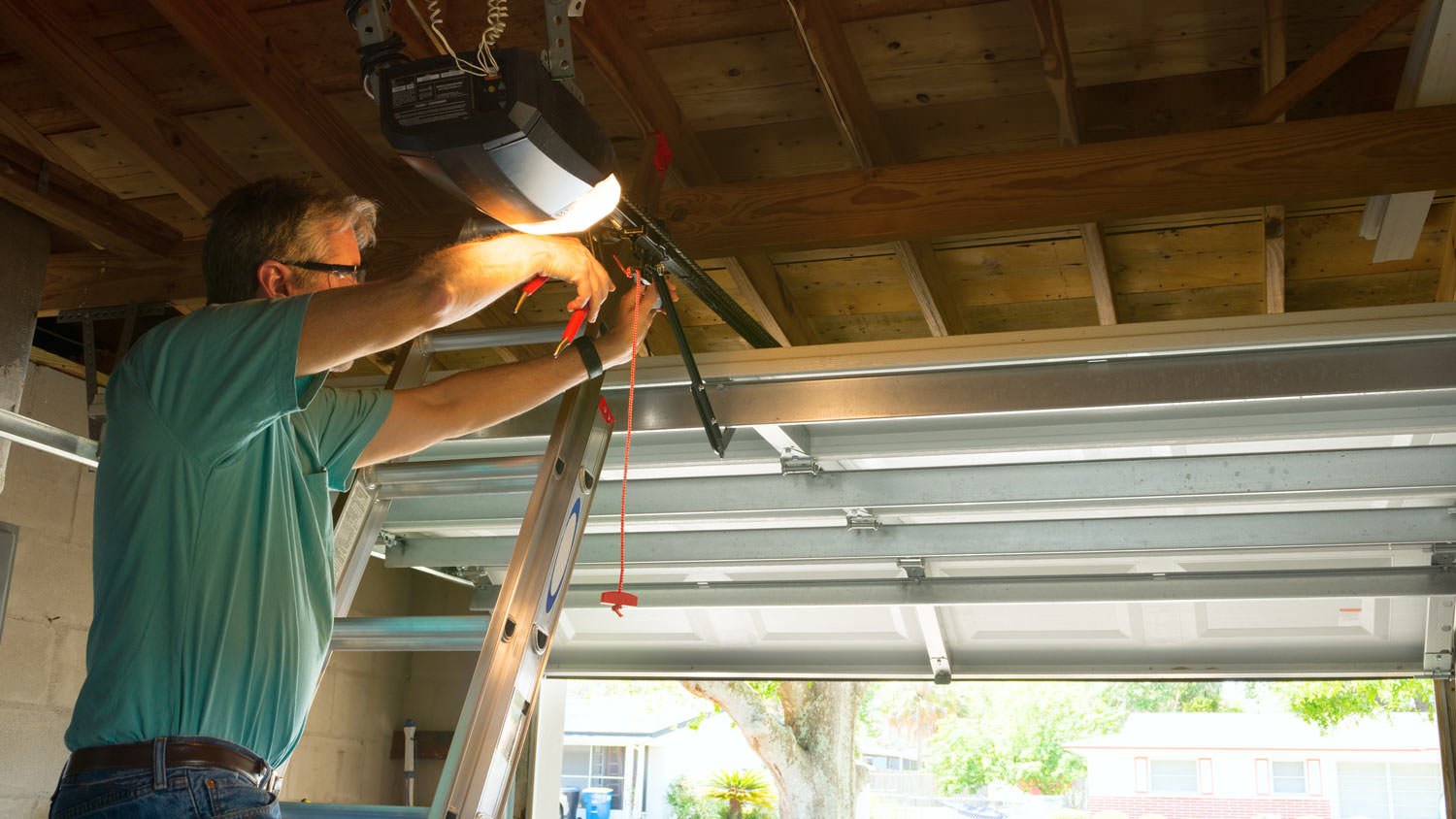Your garage door opens and closes using a track and rollers. If these parts are in working order, your garage door should be able to move freely. When the door is open, it should stay open.
You can inspect the door, track, and rollers by switching your garage door opener into manual mode and moving your door into different positions by hand. During your inspection, make sure:
Your door isn’t dented, rusted, or worn
You can open and close the door without strain or difficulty
Your door stays on the track
The track isn’t rusted, corroded, or worn down
Your door stays open when it’s fully open
Your door stays open when it’s half open
The rollers stay inside the track
The rollers are free from obvious wear like chips, cracks, or warping
If your door feels sticky, make sure the track isn’t blocked by debris. Lubricate the rollers with a garage door lubricant spray or powdered graphite, and then wipe the excess product away with a damp rag. If that doesn’t help, call a professional. Do not attempt to replace rollers or adjust your door’s balance on your own, as this step can be dangerous.
Now is also a good time to start maintaining your garage door. Waxing and regularly washing your door with hot, soapy water will help stave off corrosion.
5. Inspect, Clean, and Fix Hardware
Hardware like brackets and hinges hold your garage door and its mechanical parts together. Unfortunately, they’re also a magnet for dirt, dust, and grime. The following steps will help ensure your hardware remains in good shape:
Look for loose or missing screws and bolts along the system
Tighten loose screws with a wrench
Replace missing bolts and screws (read the system manual or contact the manufacturer to find the type you should use)
Search for signs of rust, and then clean it with a rust remover or a home remedy like white vinegar
Wipe down hardware with a damp rag, using paint thinner if they’re particularly greasy
Lubricate hinges with a garage door lubricant spray or powdered graphite (avoid wet lubricant because it attracts dirt and grime)
If your hinges or brackets show major signs of wear—they’re warped or the metal is flaking off with corrosion—you might need replacement parts.
6. Inspect the Springs
Most garage doors have one of two types of springs:
Torsion springs, which are located above your garage door
Extension springs, which are located above the upper track
When your garage door is closed, check the springs for signs of rust, breakage, and wear. If they’re squeaking, lubricate them with a garage door lubricant spray or powdered graphite. If the squeaking doesn’t stop, there may be a larger problem. Extension springs should have retention cables that prevent injuries in case a spring snaps. Make sure these cables are intact and free of obvious wear.
You should never tamper with the torsion springs on your garage door or try to replace them on your own. These are tightly wound and one mistake can cause severe injury. If you notice a problem with your springs, call a professional.
7. Inspect the Pulleys and Lifting Cables
Look for signs of wear and tear, like fraying, cracks, corrosion, or sagging, on your garage door’s pulleys, lifting cables, and chain. The lifting cables on the lower part of your roller bracket tend to wear out first. If you notice signs of wear, bring in a professional. It’s dangerous to tamper with these elements, particularly pulleys that are attached to springs.
8. Inspect the Weatherstripping
Weatherstripping, the rubber tread on the bottom and sides of your garage door, can help increase your home’s energy efficiency by sealing your garage. Inspect the weatherstripping by:
Closing your garage door
Inspecting whether any light comes through the bottom or sides of the door
Look over the tread for signs of obvious wear, like tread that’s warped, missing, cracked, or out of place
Some homeowners choose to replace the weatherstripping on their own. It’s available at most hardware stores, and comes in a variety of different materials. If you’re not quite that handy, you can get the weatherstripping replaced professionally. This usually costs somewhere between $170 and $490.











